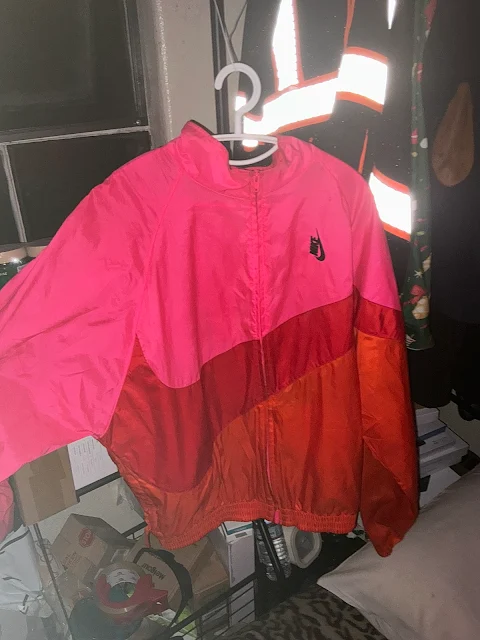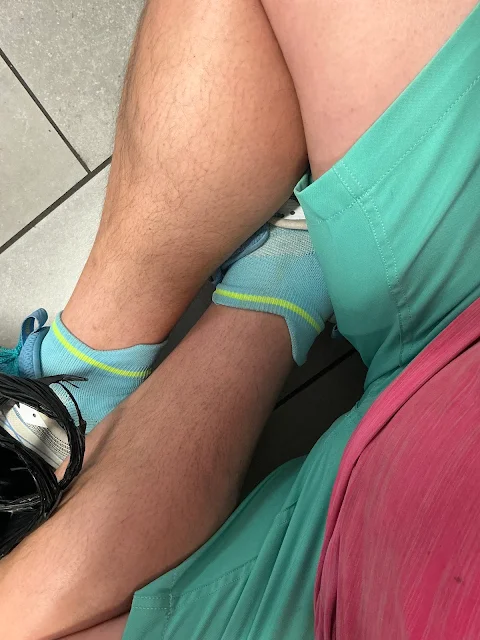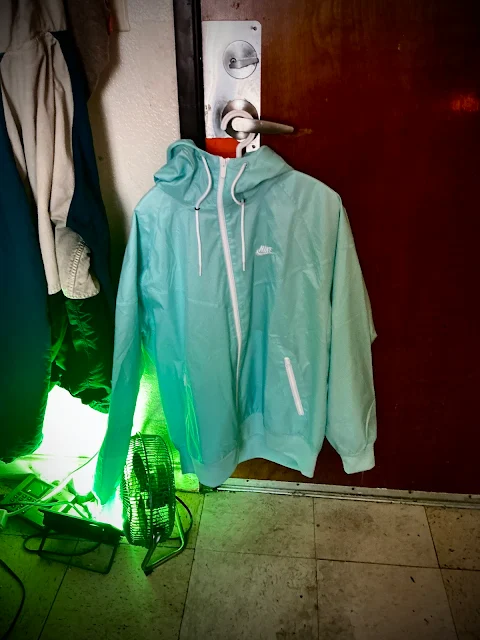Typically, I’d say that I go with the flow, and I complain about things minimally, largely based on my participatory roles and level of influence, but also because I commonly don’t pay too much attention to emerging issues. Given that, one of my pet peeves is how smokers dropped the ball when the legislation to ban flavored and menthol tobacco products came out, and the law was passed. It’s a mostly sorry time, where I live, when it comes to tobacco, but, on the other hand, it’s a flourishing time of open-air settings, where entrepreneurs sell cigarettes (menthols, even), in these dire times, so I went a long time without doing anything about this issue that ruins my smoking experience.
Being that I’m also homeless, and recently coming from living on the streets, I picked up the bum habit of diving for “good” cigarette butts that I pass by, on the ground. This is no small town, and there’s hardly any benefit to trying to scale the social status ladder, especially for someone like myself, I figure, so I go ahead and do it, but tasting full flavor tobacco, and, commonly, cheap varieties, for that matter, left a bitter taste in my mouth too many times, so I went wandering around, in this arena of cigarette butts lying around, on one hand, and cheap varieties of whole cigarettes going for as cheap as 25 cents each, on the streeet.
I have to admit, the ground-scraping cigarette butt diving persona had its perks, mainly, in that sometimes, (but regularly enough), I would get a taste of a higher notch of tobacco, small that it might be, and sometimes, they were exotic varieties, even - these were just cigarette butts that had been lying around, on the ground, that I picked up and smoked. Recently, I started to become aware of exotic varieties of Marlboro cigarettes being floated around, somehow, when I came across a couple of Marlboro “Forest Mist” cigarette butts on the ground, at a filming location in DTLA.
 |
| After finding some Forest Mist Marlboro Vista series cigarette butts on the ground, I became intrigued with discovering what I could about this exotic flavored tobacco variety. Here, I have a pack of my own, now. |
I went online and searched around for what information I could find on Forest Mist Marlboros. I found some Reddit forums, some social media pages that mentioned the cigarettes, and I came across some purported suppliers. After mulling things over for a couple of months, or more, I came in to a time in life where I had some budget surplus, and I decided to bite the bullet, so to speak, and decide upon how, and where, I would go about in procuring Forest Mist Marlboro cigarettes of my own.
I happened upon several websites that claimed they provide the cigarettes, internationally, but I had to do some sifting through potential scam sites, and I settled upon ciggiesworld.ch, which, ostensibly, would be based in Switzerland, although I’ve now found that they operate out of South Korea and Indonesia, two countries that I’ve come to know as that their people really, really like their tobacco, and, apparently, flavored, at that. The politics of the naysayers are such that they’d put a global ban on flavored tobacco, altogether, yet, some of these countries, where resistance is minimal, put forth a fertile grounds for tobacco companies to flaunt their latest and best (in tobacco).
The Vista series of Marlboro cigarettes is essentially a variety of shapes and flavors of cigarettes, which have the feature of having flavored pop balls in the filters, to flavor the smoking experience, at the time of smoking each cigarette. There are dozens of rebranded and remarketed Marlboro cigarette varieties for sale on Ciggies World, and they carry what I found to be an intriguing variety of flavored pop ball cigarettes by Marlboro, as well as flavored ball cigarettes from other brands. Their site, although not perfect, is designed well enough to be an e-commerce establishment, I figured, so I went ahead and tried them out.
Another aspect of the global politics of tobacco is the price. For example, the pro-smoking countries see much cheaper prices on tobacco than we get, here, in the United States, due to legislation about things such as associated health care and advertising that comes with tobacco use. On Ciggies World, most of the premium brands are priced at $6.90, or so, for their popular varieties, yet some of their offerings are even cheaper.
 |
| Marlboro Tropical Burst has emerged, from my buying haul from Ciggies World, as my favorite amongst the variety that I sampled from them, with a basic clove flavor to a slim cigarette profile, with two added tropical burst flavor capsules. The price per pack is less than $5.00. |
The checkout for the site, while fairly standard and automated, which people would expect, comes with some unusual requirements, such as that the buyer self-manages the payment for the transaction, after figuring out the fees for shipping, in combination with the price of the packs selected. One of the quirks of the company, I’ve learned, is that they do not ship more than 10 packs per box, regardless of how many more packs the buyer purchases. For example, I bought 13 packs, the total for shipping and the cigarettes came out to $130.60, or about $10 per pack. Not bad, for premium flavored cigarettes, especially comparatively, given that they’re not available in America, but the shipping price goes up, incrementally, (I think), based on multiples of 10 packs, so it’s more so worth it to buy them in multiples of 10. So I made the purchase and sent a bank transfer of the funds to Ciggies World, via a Zelle transaction, and I waited. The waiting is an aspect of the transaction that was a bit nerve wracking for me, being that I knew I was going to have to wait for my tobacco to arrive, whereas I would have liked to smoke the flavored tobacco immediately. I read the forums, though, and the people said that the company is reputable, and there were numerous good reviews about Ciggies World.
All in all, it took a couple or a few days, or so, (it seemed like) for the company to acknowledge my payment and get the items shipped. Once the shipping labels had been made, there was an additional wait for tracking information to show up, which was kind of irksome, but, once the first shipment arrives, all of the anxieties and nervousness subsides. Their products are good, and the variety of cigarettes you can buy is top notch. They specialize in flavor capsule cigarettes (more popular in South Korea) and clove cigarette varieties (which are popular in Indonesia). The shipment, from the time of purchase, to the time of receipt, was about 10-14 days, or so, which beats the site’s estimations. The cigarettes are shipped via Airmail (I got them as registered mail and priority mail, but the shipments both arrived on the same day, despite the tracking saying otherwise, during the process). The buyer has to sign for the shipments upon receipt. A tip on shipment tracking: 17track (the company’s recommended tracking software) will track the shipment until it reaches the destination port - something like that. My two shipments tracked differently from South Korea and Indonesia. If you check the USPS site with the tracking numbers, once they’re shipped, you’ll see more detail after the item reaches US customs, whereas support on 17track stops, at this point.
Smoking the flavored tobacco is a pleasure. The slim varieties are a bit like a “snack” of smoking, and they’re tempting, to smoke them incessantly, for a little while, although I think I’ll get over it (I just picked up my shipment from the post office earlier, yesterday). It’s nice to have a variety to choose from, and hopefully, the cigarettes I purchased will last a while.
 |
| My packs of cigarettes, in bubble wrap. Packed! |
Reviews of the flavors:
As I mentioned, I purchased 13 packs, this time around, and the main attraction to purchasing from Ciggies World was the slight discount - about 15% or so, on cigarette packs, as well as the added feature of having dozens of packs and brands to choose from, which, amongst them, include flavored capsule varieties of packs - a feature that is banned in the US; it’s required to source flavored cigarettes internationally. Some of the varieties had a 3 pack minimum purchase quantity, per order, namely, in this case, the Marlboro varieties. Here are some notes on the other packs that I got from Ciggies World.
 |
| A pack of Marlboro Vista Tropical Splash cigarettes. |
Marlboro Vista Tropical Splash - $6.80
At first, I was kind of on the fence with this citrusy mango menthol-flavored cigarette, but the flavor capsules grew on me, and, even aside from popping the capsules, the flavor of them is slightly imparted on to what otherwise would be a fairly standard 6.0 mg tar 0.5 mg nicotine Marlboro full-flavored cigarette - not bad tasting. I found that popping one or the other capsules gave less of an “ice” menthol flavor, and, as the cigarette burned down, sometimes, I would pop the 2nd capsule, for an icy finish effect of the smoke.
 |
| Marlboro Vista Summer Splash is more of a berry-minty flavor. |
Marlboro Vista Summer Splash - $6.90
The names get kind of confusing, since both this pack and the first pack have “splash” in the name, and they are generally similar cigarettes, in and of themselves - a standard Marlboro cigarette that has two flavor capsules, except, in this case, the flavor is more berry, with the second capsule a bit citrus-minty. Actually, once again, the effect of both capsules, when they’re both popped, is kind of strongly icy minty, and I started to pop one at a time, with this one, as well, so I could learn to distinguish and choose which flavor I wanted to start with, and perhaps I’d finish off, popping the second one. This one has 3 mg tar and 0.2 mg nicotine, according to the Ciggies World site.
 |
| A clove cigarette, by Djarum, with a cola flavor capsule. |
Djarum Super MLD Fresh Cola - $3.50
Many people who smoke cigarettes have been familiarized with Djarum “cloves,” which are actually labeled as little cigars, and they feature brown or black paper, here in California (Ciggies World has dozens of Djarum varieties on the site). These, by comparison, are much more bright and smooth cigarette tobacco ciggies. The cigarette is flavored as a clove, as is, and the cola flavor is very mild and not very noticeable. Regardless, it’s a cheap pack, and it’s not bad, especially for the price, and for the smooth tobacco flavor and experience.
 |
| The Marlboro Vista Forest Mist cigarettes are amongst my favorites, out of the packs that I ordered. |
Marlboro Vista Forest Mist - $6.90
These slim cigarettes, with 1.5 mg tar and 0.2 mg nicotine, are very enjoyable, quick little treats of a smoking experience, with a flavor capsule that imparts a berry, floral sort of flavor. I wanted to smoke one after another of these, at times, but thankfully, I had a variety of packs of cigarettes available, so I could alternate and distract myself from smoking too many of these, too quickly.
 |
| Another tropical-themed Marlboro cigarette, but this one starts off as a clove. |
Marlboro Vista Tropical Burst - $4.90
I mentioned earlier in this article that this one was my favorite, but, I suppose, all in all, I like the variety and choice of having several various packs and flavor options to choose from, and I enjoy switching between packs, to have different smoking experiences. Wouldn’t that be the point, sort of? This one is a mild clove cigarette, as a basis, with tropical and minty citrus flavor capsules, with 12 mg tar and 0.8 mg nicotine, per cigarette. The clove cigarette, on its own, is bright and smooth, and the flavor capsules provide a good compliment to the smoking experience.
 |
| The Esse Change Applemint cigarettes are just okay. |
Esse Change Applemint Capsule Superslim Kretek Cigarettes - $4.80
This is another single-capsule clove kretek cigarette, like the Djarum pack that I purchased. I didn’t really notice, all that well, the clove flavor of these cigarettes, but the website says that it’s a clove. I thought that it was just a standard superslim cigarette with an Applemint flavor capsule. The flavor of these capsule is okay, it’s a bit too minty and icy for me.
 |
| The Esse Change Icy Double is a very tasty clove kretek cigarette, with a minty option. |
Esse Change Icy Double Kretek - $3.50
Oddly enough, the Icy Double Esse Change Superslim Clove Kretek cigarettes are less icy than the Applemint. The first impression of the cigarette is that it’s a fairly standard cigarette, and the orange capsule gives it a nice, fragrant clove flavoring, while the second, blue capsule, gives it a minty freshness. I really enjoyed tasting this cigarette, and I’d definitely order it again, especially since it’s currently on sale!
Final thoughts:
Having flavored tobacco is a much more novel and enjoyable experience than plain old full-flavored tobacco, without any flavor options. It makes the smoking experience smoother, and the flavor capsules might help cut down on the smell. I recommend trying Ciggies World out, for yourself, with these reviews as reference for packs that you might try.
Update:
I tried out putting out one more order of cigarettes from Ciggiesworld, and at the end of the transaction, they sent me a message, or there was a page, perhaps, that stated that they no longer ship to the United States, on account of the de minimis tariffs imposed by Trump. I instead opted to order cigarette flavor beads off of eBay. Not a bad alternative, it’s still flavoring, you just would have to insert the flavor yourself, but the flavors are pretty nice. I tried out peach ice.




























































